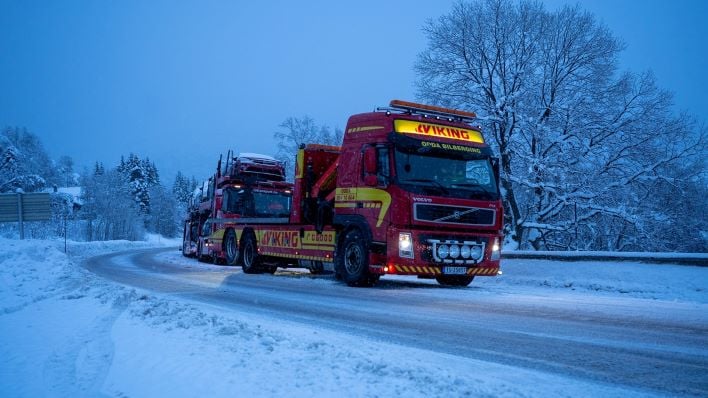
How Do EVs Perform in Frigid Weather?
By: Chandu Visweswariah
I’ve been asked by multiple friends and relatives what it’s like to drive an EV in frigid weather. I usually reply that the combination of a heavier car, low center of gravity, high torque at slow speeds, and four-wheel drive is an unbeatable combination in snowy and icy conditions. In fact, given that our driveway is steep, curvy and incredibly icy right now, I’ll come right out and say I’ve never had such a civilized experience driving in the ice and snow till I started driving an electric car!
After a couple of such conversations, I realized that in my zeal, I totally missed the intent of the question. “Didn’t you see what happened in Chicago?” I’m asked. “It’s all over TV.” A quick search revealed this report and another one. I realized that they were asking about an incident in a place called Evergreen Park (the irony of this name is not lost on me) near Chicago where Teslas were not charging properly at a particular charging station. Cars were taking too long to charge, and some cars were dying due to complete loss of charge.
When frigid weather strikes, I take a few common-sense precautions:
- Since it takes more energy to heat the cabin, I try to pre-heat the cabin before I leave home or at a charging station, while the car is still connected to a charger. That way, the energy to initially bring up the temperature of the cabin does not drain the battery.
- Charging is slower at colder temperatures. Therefore, I use my car’s ability to precondition the battery for charging. As a practical matter, I just add the charging station as an “enroute destination” in my GPS, and the car takes care of the rest. Or if I’m at home, I tell the car when I intend to leave on my next trip, and it takes care of both preconditioning and charging in an optimal manner.
- The first generation of electric vehicles had inefficient resistive heating for the cabin, whereas most modern vehicles have heat pumps. The heat pumps are much more efficient, so the energy to heat up the cabin becomes much less of an issue. Research this aspect before you buy an electric vehicle.
- Finally, the underlying physical and chemical processes that make a battery tick are less effective at low temperatures. So, I usually build in a 30% buffer. In other words, if I am planning a 100-mile trip, I make sure I have at least 130 miles of charge before leaving home. Don’t ever let the charge level get too low.
- Similarly, while my car has a range of 400 miles, for day-to-day use, I only charge up to 250 miles. But when severe winter weather hits, I keep it charged to 300 miles on a daily basis. (The last time we had an electrical outage, my EV was my temporary office and I ran Zoom calls all day with my smartphone plugged in.)
With these simple precautions, I’ve personally not had any difficulties with winter driving in the last four years. However, recent TV coverage of EV problems led me to ask, “I know EVs are generally more reliable than Internal Combustion Engine (ICE) vehicles because they have much fewer parts. But are they less reliable in extremely cold weather? Is this a reason not to buy an EV?”
Luckily, a study in Norway has the answer for us. Norway has the advantage of both being extremely cold this winter and having a very large number of electric vehicles across which to gather statistics. EVs have more than 90% market share and constitute 23% of the vehicles on the road. A road rescue company called Vikings Assistance Group (like AAA) collected statistics on how many EVs and how many ICE vehicles required assistance during periods of frigid weather in January 2024. The answer: 13% of starting difficulties are linked to electric cars, while 87% are from fossil fuel vehicles – in other words, the statistical data shows that EVs have half as many battery problems as ICE vehicles! This is also true of all repair requests, but not as decisively in favor of EVs.
For those in the media sector, I’d like to ask how is it that the (anecdotal, isolated) Chicago piece was covered in mainstream media like CBS news while the (statistical, definitive, data-driven) Norway study wasn’t? The news from Norway can only be found on relatively niche websites like Electrek, Hot Hardware, Fast Company and Teslarati.
For those readers who are driving EVs, I hope this article gives you comfort that you made a good choice. Of course, no piece of mechanical equipment is 100% reliable, but it is beyond impressive how this relatively new 10-year-old technology is outperforming 100+-year old technology in so many different ways.
And for those still driving ICE vehicles for one reason or another, or considering buying an ICE vehicle, know that you are aiding and abetting our collective climate suicide.
In conclusion, no matter how much FUD (Fear, Uncertainty and Doubt) the media and fossil fuel industry create, the time is ripe to embrace electromobility, and there are substantial financial incentives to do so. It is now four years later, and I haven’t even once remotely regretted my decision to purchase an EV.

